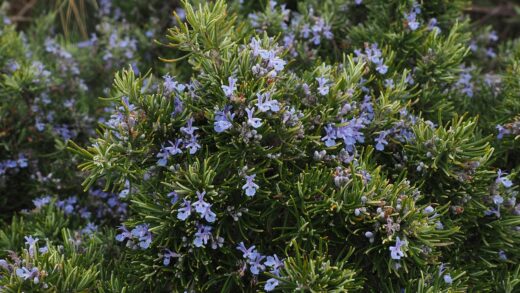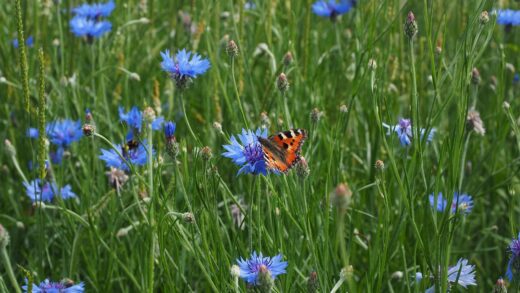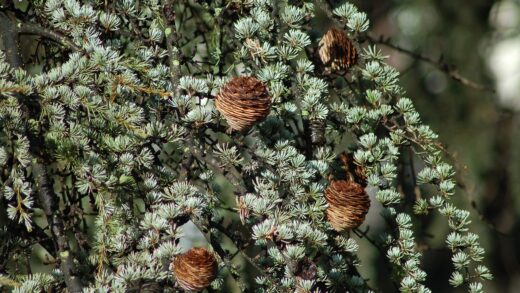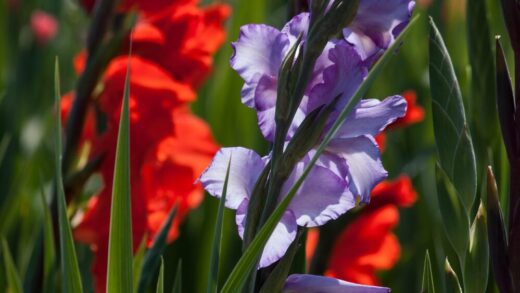The common mallow, a charming and often underrated plant, offers both ornamental beauty and a rich history of herbal use, making it a delightful addition to any garden. Proper care is straightforward, yet understanding its fundamental needs is the key to unlocking its full potential for vigorous growth and prolific flowering. This guide provides a comprehensive overview of how to cultivate healthy, thriving common mallow plants, from selecting the perfect location to managing their health throughout the seasons. By mastering these essential care principles, you ensure that this resilient plant not only survives but becomes a standout feature in your landscape. This journey into mallow cultivation begins with a solid foundation of knowledge, ensuring a rewarding experience for both novice and seasoned gardeners alike.
The first step in successfully caring for common mallow is to appreciate its inherent adaptability, which is a significant advantage for gardeners. This plant is not overly demanding, often thriving in conditions where more delicate species might struggle. It has a deep taproot, which allows it to access moisture and nutrients from lower soil levels, contributing to its drought tolerance once established. However, this adaptability does not mean it should be neglected; rather, it implies that your efforts will be rewarded with exceptionally robust growth. Providing it with a good start in life sets the stage for a low-maintenance future.
Understanding the life cycle of the common mallow is also crucial for its long-term care and your own gardening plans. Typically grown as a biennial or a short-lived perennial, its growth pattern influences how you should manage it from one year to the next. In its first year, it often focuses on establishing a strong root system and a rosette of basal leaves, with flowering being minimal. The second year is when the plant truly comes into its own, sending up tall flower spikes that produce a continuous display of blooms from summer until the first frost.
Finally, integrating common mallow into your garden’s ecosystem is a vital aspect of its care. This plant is a fantastic resource for pollinators, attracting a wide variety of bees and butterflies with its nectar-rich flowers. By cultivating it, you are not just adding a beautiful plant to your garden but also supporting local wildlife and enhancing biodiversity. Consider its placement among other pollinator-friendly plants to create a vibrant, living tapestry that benefits the entire garden environment. This holistic approach to care ensures the plant and its surroundings flourish together.
Site selection and soil preparation
Choosing the right location is the most critical decision you will make for the long-term health of your common mallow. This plant thrives in a position that receives full sun, meaning at least six to eight hours of direct sunlight per day. While it can tolerate partial shade, its growth may become leggy, and the quantity of flowers will be significantly reduced. The ideal spot would offer bright, direct morning sun with some light afternoon shade in exceptionally hot climates to prevent leaf scorch during the peak of summer.
More articles on this topic
Proper soil preparation is equally important for giving your mallow the best possible start. Common mallow prefers well-drained soil and is remarkably tolerant of a wide range of soil types, from sandy to clay-based. However, it performs best in a moderately fertile, neutral to slightly alkaline loam. Before planting, it is highly beneficial to amend the soil with organic matter such as well-rotted compost or manure. This not only improves soil structure and fertility but also enhances its drainage capabilities, which is crucial for preventing root rot.
The physical location within the garden also warrants careful consideration due to the plant’s growth habit. Common mallow can grow quite tall, sometimes reaching heights of over a meter, so it is best placed in the middle or back of a border. This positioning allows it to create a beautiful backdrop for shorter plants without overshadowing them. Ensure you provide adequate spacing between plants, typically around 40 to 50 centimeters, to allow for good air circulation, which is essential for preventing fungal diseases like rust.
Before you finalize the planting spot, observe the area for a full day to understand its light patterns and drainage characteristics. Check how water behaves after a heavy rain; if puddles remain for several hours, the drainage is likely insufficient for the mallow’s needs. In such cases, you might consider creating a raised bed or incorporating more grit and organic material to improve the soil’s porosity. Taking these preparatory steps will save you significant effort later and is the best guarantee of a healthy, flourishing plant.
Watering and moisture management
Effective watering is a cornerstone of successful common mallow cultivation, particularly during the plant’s establishment phase. Newly planted seedlings or transplants require consistent moisture to develop a strong and deep root system. For the first few weeks after planting, you should check the soil every couple of days and water thoroughly whenever the top inch becomes dry. The goal is to keep the soil evenly moist but never waterlogged, as sodden conditions can quickly lead to root decay. This initial period of attentive watering is a crucial investment in the plant’s future resilience.
More articles on this topic
Once the common mallow is well-established, its watering needs decrease significantly thanks to its impressive taproot, which can seek out moisture deep within the soil profile. For mature plants, a deep watering once a week during dry spells is usually sufficient. It is far better to water deeply and infrequently than to provide shallow, frequent sprinklings. Deep watering encourages the roots to grow further down into the soil, making the plant even more drought-tolerant and stable. Always check the soil moisture before watering; a simple finger test is an effective way to gauge the need for irrigation.
The method of watering also plays a role in preventing common diseases. It is always best to water the plant at the base, delivering moisture directly to the root zone while keeping the foliage as dry as possible. Using a soaker hose or a watering can with a long spout is ideal for this purpose. Wet leaves, especially overnight, create a perfect environment for fungal pathogens like rust and powdery mildew to develop. Therefore, watering in the morning is highly recommended, as it gives the leaves ample time to dry out in the sun before nightfall.
Pay close attention to environmental cues to adjust your watering schedule accordingly. During periods of intense heat and drought, you will naturally need to increase the frequency of watering. Conversely, during cool, cloudy, or rainy periods, you should reduce or even cease supplemental watering to avoid oversaturating the soil. Observing your plant is also key; wilting leaves in the morning can be a clear sign of thirst, whereas yellowing leaves might indicate that the roots are receiving too much water.
Fertilization and nutrient needs
Common mallow is not a particularly heavy feeder and generally performs well in average garden soil without extensive fertilization. Over-fertilizing can be more detrimental than under-fertilizing, as an excess of nitrogen can stimulate lush, weak foliage at the expense of flower production and make the plant more susceptible to pests. The initial soil preparation with compost or well-rotted manure often provides sufficient nutrients for the entire first season. This approach encourages a more natural and balanced growth habit.
If your soil is particularly poor or sandy, a light feeding may be beneficial to support vigorous growth and blooming. The best time to apply a fertilizer is in the early spring, just as new growth begins to emerge. A balanced, slow-release granular fertilizer with an N-P-K ratio like 10-10-10 is a suitable choice. Alternatively, you can opt for an organic approach by top-dressing the soil around the base of the plant with a fresh layer of compost or a well-balanced organic plant food. This method provides a gentle, steady supply of nutrients over time.
Throughout the growing season, you can monitor the plant’s health to determine if any supplemental feeding is necessary. Signs of nutrient deficiency can include pale or yellowing leaves (chlorosis), stunted growth, or a lack of flowers. If you observe these symptoms, a liquid feed can provide a quick boost. A diluted solution of a seaweed-based or comfrey tea fertilizer applied every few weeks during the peak growing period can help correct deficiencies and promote better overall health without being overly aggressive.
Avoid fertilizing your common mallow late in the growing season, especially from late summer onwards. Applying fertilizer at this time can encourage a flush of new, tender growth that will not have a chance to harden off before the first frosts arrive. This new growth is highly susceptible to frost damage, which can weaken the plant and compromise its ability to survive the winter. The focus in autumn should be on allowing the plant to naturally wind down and prepare for dormancy, not on stimulating new growth.
Pruning and ongoing maintenance
Regular pruning and maintenance are vital for keeping common mallow looking its best and encouraging a long blooming season. The most important ongoing task is deadheading, which is the practice of removing spent flowers before they set seed. By regularly snipping off the faded blooms, you redirect the plant’s energy from seed production back into creating more flowers. This simple activity can significantly extend the flowering period, often keeping the plant in bloom from early summer right through to the first frosts of autumn.
Beyond deadheading, some light shaping can be beneficial, especially if the plant starts to become leggy or unruly. You can selectively prune back some of the longer stems to encourage a bushier, more compact growth habit. This is best done in the early to mid-summer. This type of pruning also improves air circulation through the center of the plant, which is an important strategy for reducing the risk of fungal diseases that thrive in damp, stagnant conditions. Always use clean, sharp secateurs to make clean cuts and minimize damage to the plant tissue.
At the end of the growing season, after the first hard frost has killed off the top growth, it is time for a more substantial cutback. The entire plant can be cut down to a few inches above the ground level. This end-of-season cleanup is important for a couple of reasons. Firstly, it removes any potentially diseased or pest-infested plant material from the garden, preventing problems from overwintering. Secondly, it tidies up the garden bed for the winter and prepares the plant’s crown for fresh, healthy growth the following spring.
Throughout the year, a key part of maintenance is simply observing the plant for any signs of stress, disease, or pest infestation. Regularly inspect the leaves, stems, and flowers for anything unusual. Catching problems early makes them much easier to manage. This includes checking for the orange pustules of rust disease, the white coating of powdery mildew, or the presence of aphids or other common pests. A well-maintained plant growing in its ideal conditions will be far more resilient to these issues.
Pest and disease management
While generally a robust plant, common mallow can be susceptible to a few specific pests and diseases that require vigilant management. The most common issue affecting mallows is rust, a fungal disease caused by the pathogen Puccinia malvacearum. This disease manifests as small, orange-to-brown pustules on the undersides of the leaves, with corresponding yellow spots on the upper surfaces. It can weaken the plant and, in severe cases, cause defoliation. Good air circulation and avoiding overhead watering are the best preventative measures.
To manage an existing rust infection, the first step is to remove and destroy all affected leaves immediately to prevent the spores from spreading. Do not add these leaves to your compost pile, as the spores can survive and reinfect plants later. For persistent infections, a fungicide containing copper or sulfur can be effective when applied according to the manufacturer’s instructions. However, focusing on cultural controls like proper spacing, watering at the base of the plant, and autumn cleanup is a more sustainable long-term strategy.
Another potential adversary is the flea beetle, a small, dark beetle that jumps like a flea when disturbed. These pests chew small, irregular holes in the leaves, which can give them a “shot-hole” appearance. While a minor infestation is usually just a cosmetic issue, a heavy infestation can stress the plant. You can deter flea beetles by maintaining a healthy, vigorous plant, as they tend to target weaker specimens. Floating row covers can be used to protect young plants, and beneficial insects like predatory nematodes can help control the larvae in the soil.
Aphids can also occasionally become a problem, clustering on new growth and flower buds to suck the sap. This can cause distorted growth and a sticky residue known as honeydew, which may attract sooty mold. A strong jet of water from a hose can often be enough to dislodge a small aphid population. For more significant infestations, insecticidal soap or neem oil sprays are effective and are a more environmentally friendly option than synthetic pesticides. Encouraging natural predators like ladybugs and lacewings into your garden will also provide excellent long-term control.

















